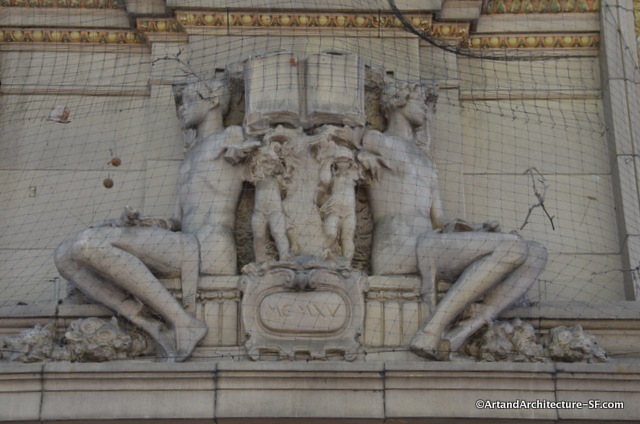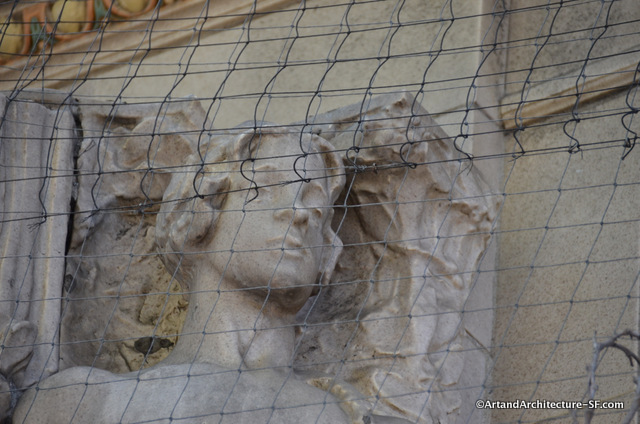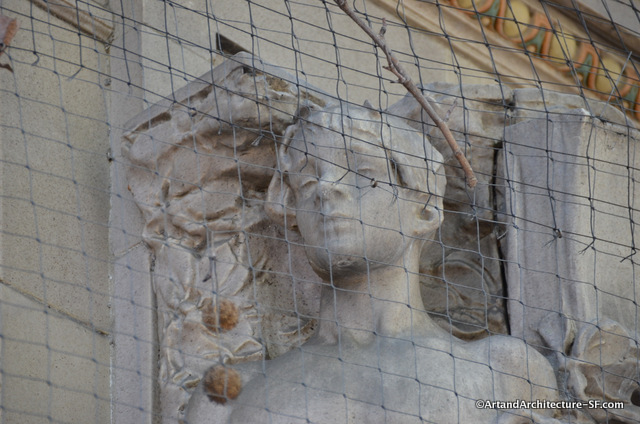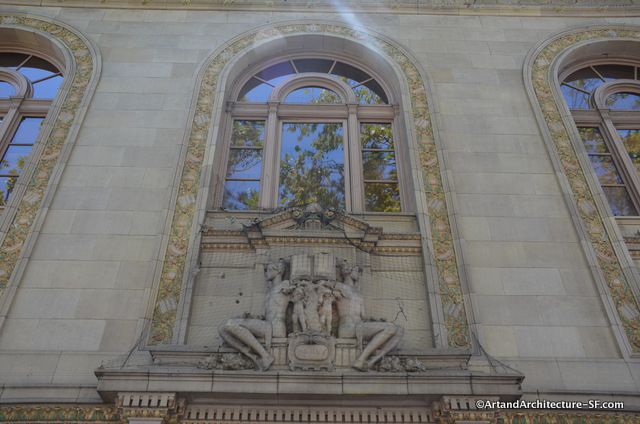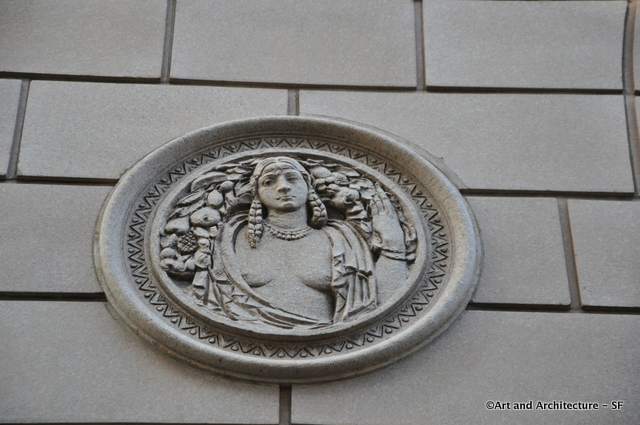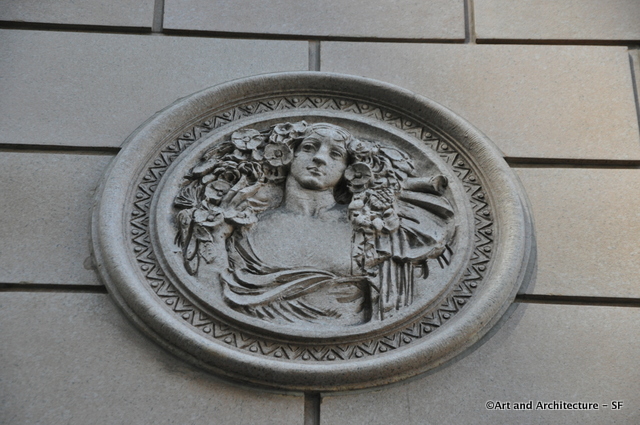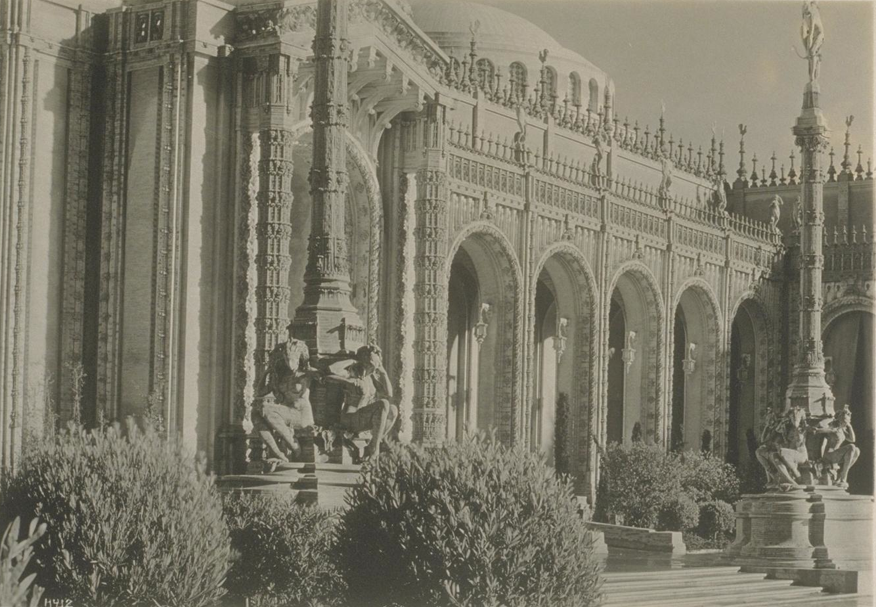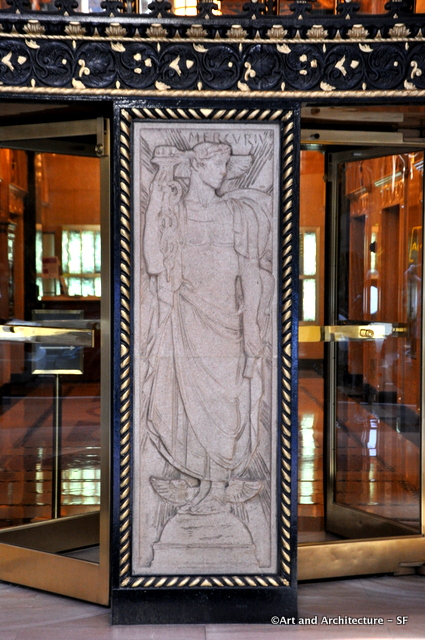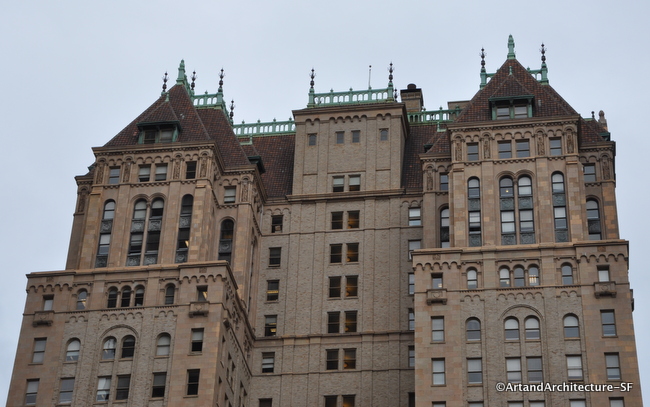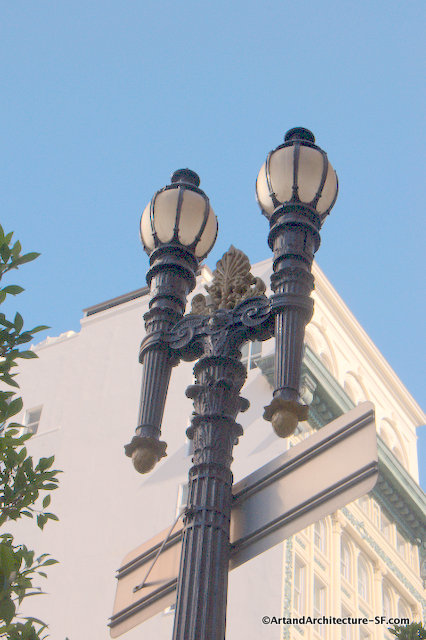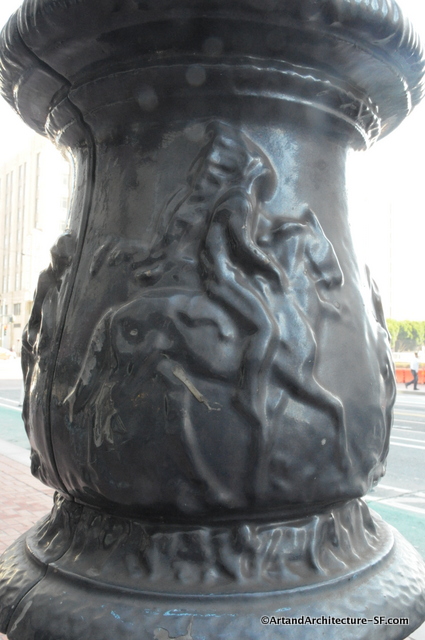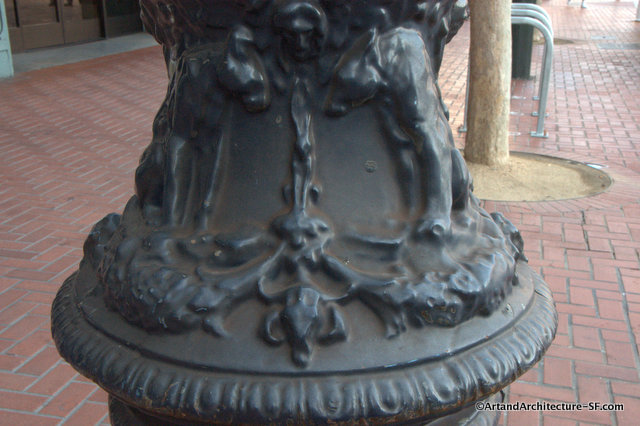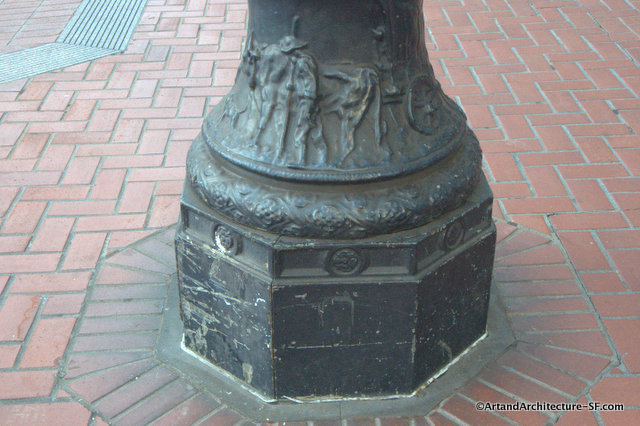San Francisco Main Library
Now the Asian Art Museum
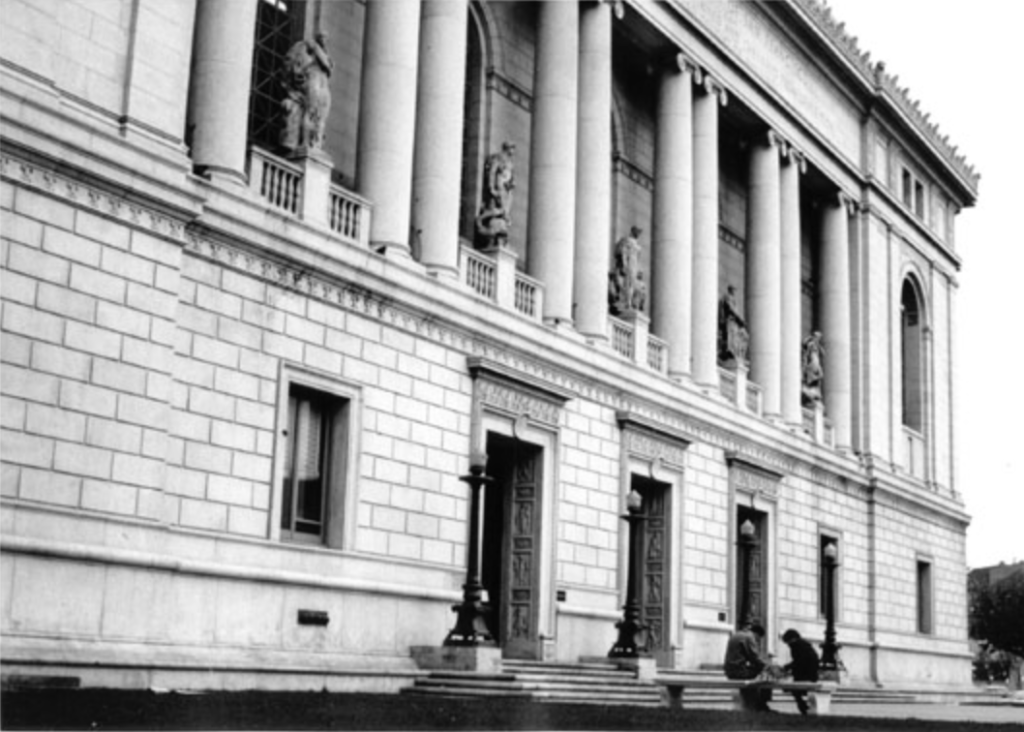
Photo courtesy of the San Francisco Public Library
Sometime between 1915 and 1917, Leo Lentelli was commissioned to design five large sculptures for the facade of the Main Public Library, now the Asian Art Museum.
In a March 1918 article titled “An Expression of Decorative Sculpture – Leo Lentelli,” published in The Architect and Engineer, Sadakichi Hartmann boldly stated that the five figures were “by far the most important work Lentelli has as yet attempted.” The sculptures, which represent Art, Literature, Philosophy, Science and Law, are 7-feet 8-inch high cement figures once set atop granite pedestals and originally sat above the library’s main entrance.
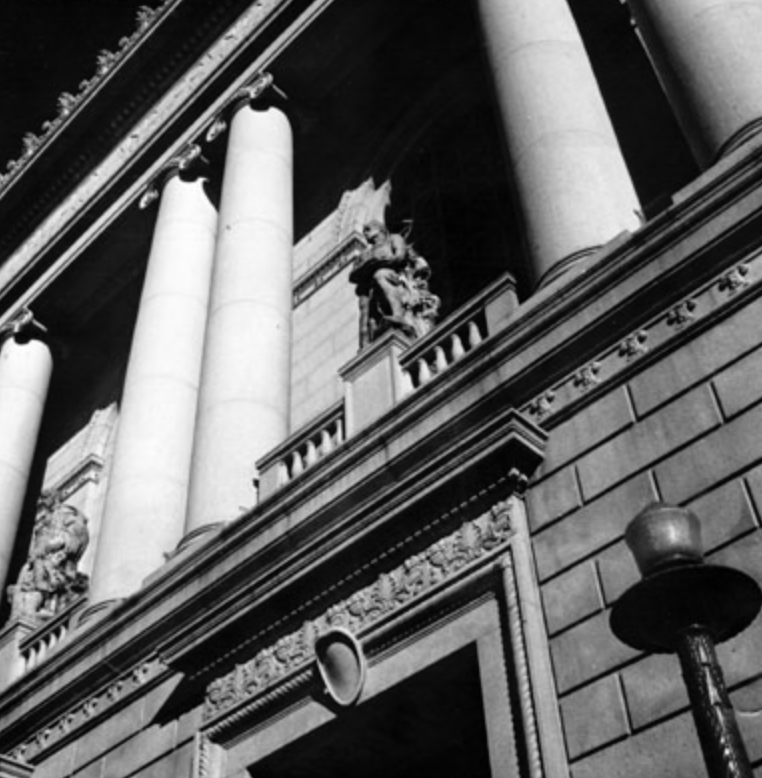
Photo courtesy of the San Francisco Public Library
Hartmann explained that “even the medium is new…(past Lentelli) sculpture was done in cement and Lentelli has stuck to it as his principal medium of expression. It is warmer in color, almost looks like granite when properly polished and gone over, is cast easily and less expensively and stands the inclemency’s of the climate – rain, wind and mist-as well as any other medium.”
Hartman went on to say that Lentelli’s sculptures are an “effective juxtaposition of deep lines and massive forms, of black accents and large, quiet planes.” leaving the object free of what Hartmann described as “useless conventional details. ” Because of this contrast Hartmann pointed out that “Lentelli’s works are not made for indoors. They are constructed to be seen in the open, in sunlight, or on gray days, and generally from a considerable distance and particular view points.”
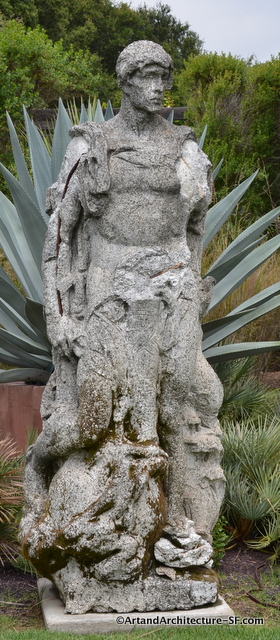 The sculptures were removed when the building was remodeled into the Asian Art museum and sold to a private collector by the City of San Francisco.
The sculptures were removed when the building was remodeled into the Asian Art museum and sold to a private collector by the City of San Francisco.
Lentelli was born in Bologna and began his career in New York, arriving in San Francisco to participate in the Pan Pacific International Exposition in 1915. He sculpted the Genii on Columns for the Court of the Universe, the columns of Earth and Air for the Court of the Ages and the figure of Aspiration for the main portal of the Palace of Fine Arts. He received numerous commissions for public sculpture throughout the United States including the sculptures of Mining and Agriculture for the Sullivan Gate of the Denver City Park, the sculptures for the facade of the Loew’s Theatre in St. Louis and the statue of Cardinal James Gibbons in Meridian Hill, Washington D.C.. San Franciscan’s can find his work on the entry way to the Hunter Dunlin Building, as well as the design of the light stanchions that make up the Path of Gold on Market Street.
Lentelli died in Rome in 1962.
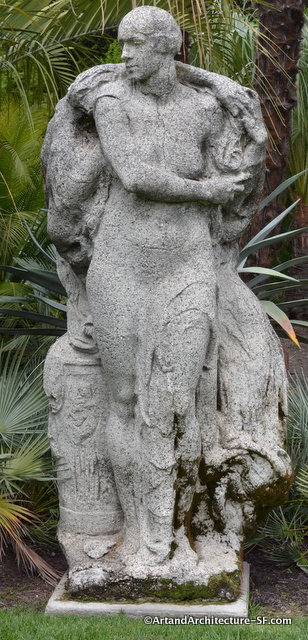
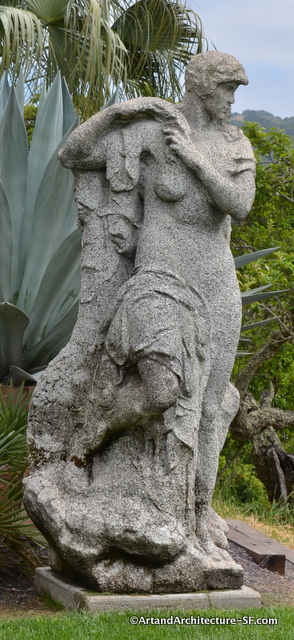
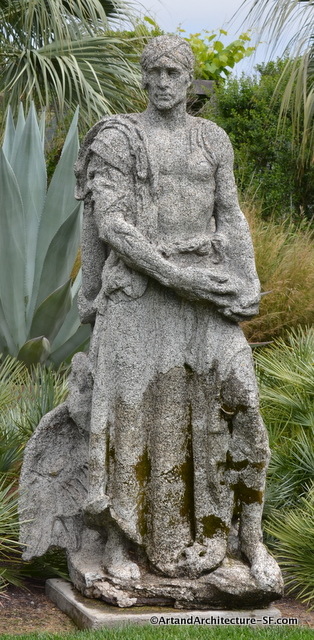
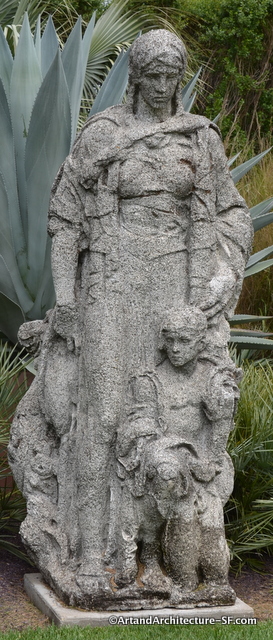
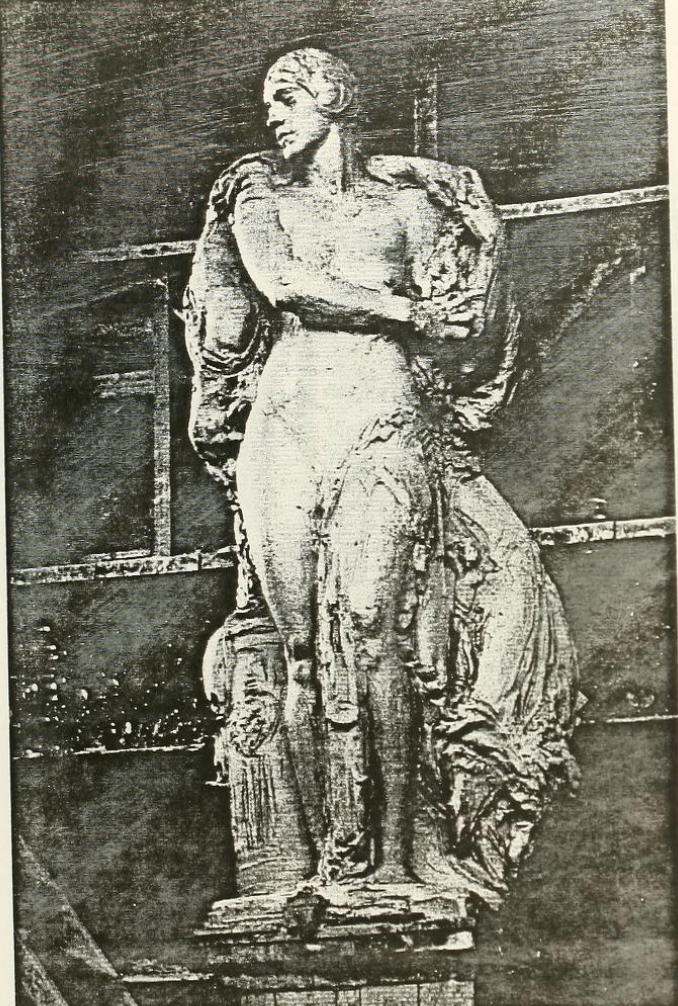
Original clay sculptures. Source- Lentelli Papers – Smithsonian Archives of American Art
In working with cast stone, first a clay model is made, then a mold is made from the clay model. Finally a cementious material is poured into the model to create the final piece.
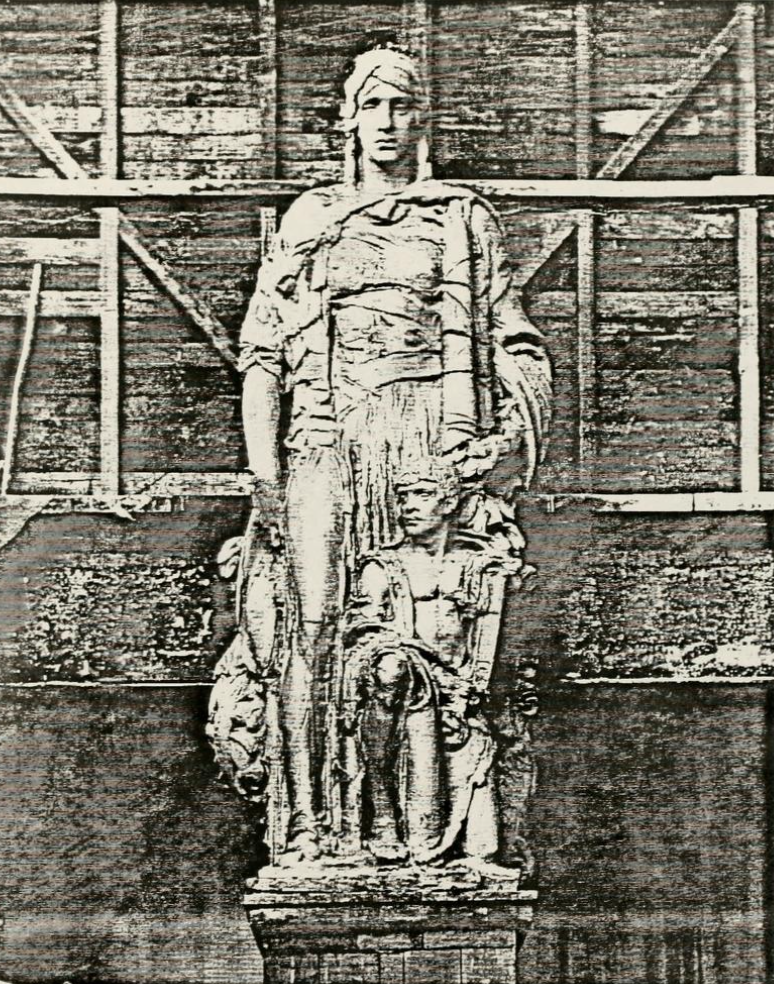
I would like to thank Piraneseum for their help on this article.
